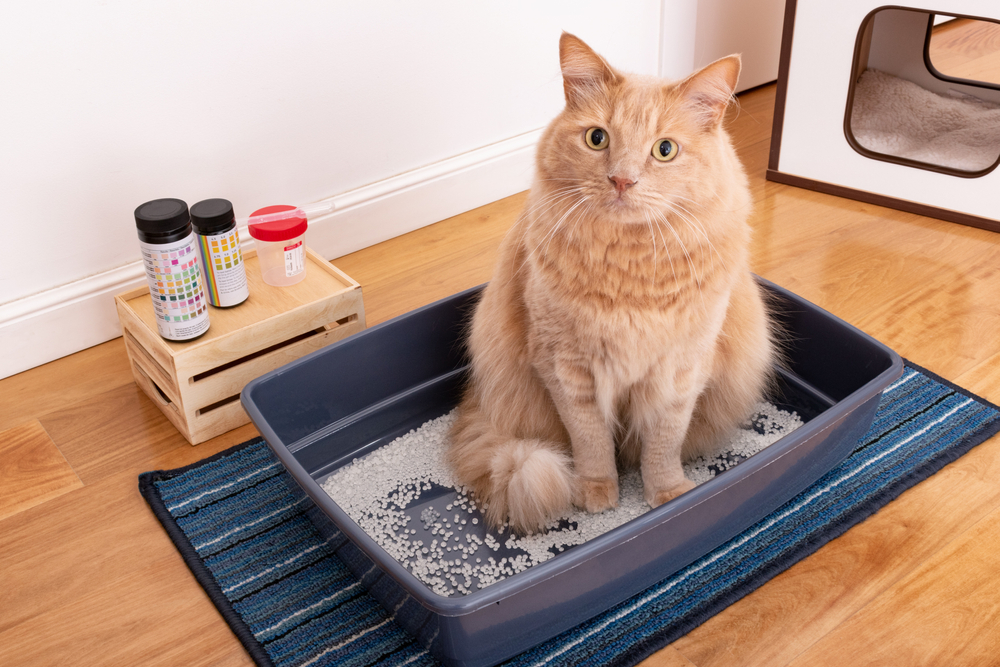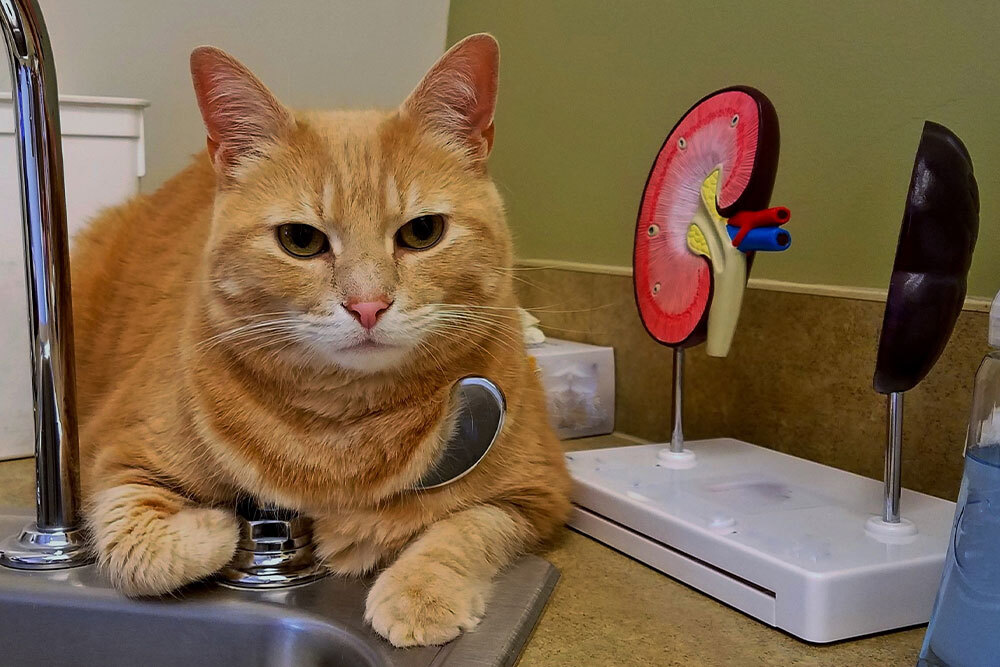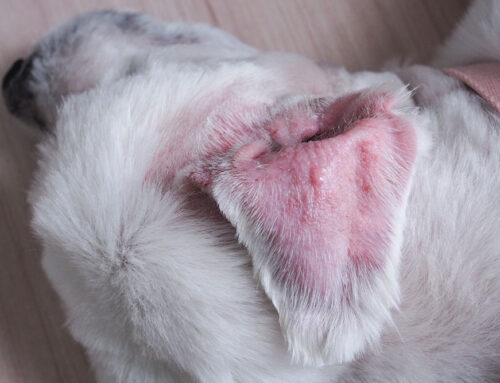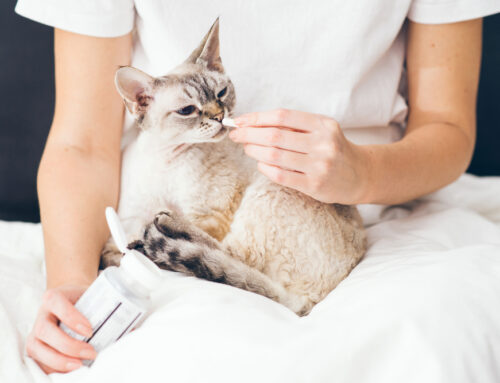Chronic Kidney Disease in Cats: Early Detection, Effective Management, Longer Life
At Valley Center Veterinary Clinic in Valley Center, CA, chronic kidney disease (CKD) is one of the most common conditions we diagnose in older cats. It tends to develop gradually, and because early symptoms can be subtle, it’s often overlooked until the disease has progressed.
Understanding what CKD is, why it develops, and how it can be managed gives cat owners the tools to take an active role in their pet’s care. With early detection and ongoing treatment, many cats can maintain a good quality of life for years after diagnosis. In this post, we’ll explore the causes, symptoms, diagnostics, and management strategies to help you stay one step ahead and support your cat with CKD.
All About Cat Kidney Function and Why Early Intervention Matters
Healthy kidneys filter toxins, balance electrolytes, regulate blood pressure, stimulate red-blood-cell production, and keep water where it belongs. In CKD, millions of microscopic filters called nephrons scar over gradually, which reduces those vital functions. Damage is permanent, so prevention and early intervention are critical.
| Kidney Task | Normal Result | When CKD Develops |
| Filtration of waste | Clean blood, normal appetite | Nausea, weight loss |
| Water balance | Hydrated tissues, concentrated urine | Excessive thirst, large clumps in the litter box |
| Blood-pressure control | Steady circulation | Hypertension, risk of retinal detachment |
| Hormone production | Adequate red cells | Anemia and fatigue |
Early intervention is one of the most powerful tools in slowing the progression of chronic kidney disease in cats. Subtle changes in kidney function often go unnoticed at home, but routine bloodwork and urinalysis can detect problems long before symptoms appear. Wellness programs, such as Valley Center Veterinary Clinic’s Adult Cat Wellness Packages and Senior Wellness Packages include regular exams, lab testing, and preventive care designed to catch disease early. By identifying kidney changes before they become advanced, veterinarians can recommend dietary adjustments, hydration strategies, and treatment plans that preserve quality of life for years to come.
Causes and Risk Factors of Kidney Disease in Cats
Chronic kidney disease in cats can develop from a range of underlying causes that are difficult to detect in the disease’s early stages. However, knowing the causes and risk factors of kidney disease in cats can help your pet receive treatment early in their disease.
- Age: Prevalence rises sharply after 10 years.
- Genetics: Persians, Himalayans, and Abyssinians have documented higher risk, partly due to polycystic kidney disease.
- Toxins: Certain antibiotics, lilies, and antifreeze can damage kidney tissue.
- Untreated infections or stones: Chronic irritation scars the nephrons.
- Concurrent illness: Other illnesses, such as hyperthyroidism, can accelerate kidney wear.
Because many factors remain silent until advanced disease appears, routine senior screening serves as the first line of defense.
Subtle Signs of Early Kidney Disease in Cats
| Early Stage | Mid Stage | Advanced Stage |
| Increased water bowl visits | Intermittent vomiting | Mouth ulcers |
| Slight weight loss | Declining appetite | “Uremic” breath odor |
| Larger litter clumps | Dull coat, lethargy | Muscle wasting, seizures |
Any of these changes warrant bloodwork and urinalysis even if your cat still seems “fine.” Valley Center Veterinary Clinic offers same-day in-house testing through its diagnostics suite to catch trouble early.
How Veterinarians Confirm CKD in Felines
To confirm a diagnosis of CKD in cats, veterinarians rely on a combination of tests to help assess how well the kidneys are filtering waste, identify signs of damage or strain, and rule out other potential causes.
- Serum creatinine and SDMA: Waste markers that rise when filtration falls.
- Urine specific gravity and protein: Reveal dilute urine or protein loss.
- Blood pressure: High readings signal risk to eyes and brain.
- Imaging: Ultrasound outlines kidney size and rules out tumors.
Results are then assigned a stage following the diagnostics suite system, which guides treatment and monitoring frequency.
Treatment Building Blocks for Feline CKD
Managing cat CKD involves a multi-faceted treatment plan tailored to each pet’s specific needs and disease stage. Our team always considers the following when creating a cat’s treatment plan:
1. Therapeutic Nutrition
Prescription kidney diets contain restricted phosphorus, balanced high-quality protein, and added omega-3 fatty acids. These adjustments ease metabolic burden and can lengthen survival time by months or years.
2. Hydration Support
Cats with CKD cannot conserve water efficiently. Many benefit from subcutaneous fluids given at home two or three times weekly. Our team can show you how to administer fluids at home or provide you with other resources on how to learn.
3. Blood-Pressure Control
Amlodipine or telmisartan helps prevent strokes and sudden blindness associated with hypertension.
4. Phosphate Binders and Potassium Supplements
These powders or chews keep blood chemistry balanced when diet alone falls short.
5. Anti-Nausea and Appetite Stimulants
Maropitant, ondansetron, or mirtazapine reduce vomiting and encourage cats to maintain weight.
Complications When CKD Goes Untreated
Living proactively with CKD minimizes the chance of a kidney emergency, but it’s important for pet owners to be aware of the serious complications that may arise with this disease:
| Complication | Result |
| Uremic crisis | Sudden collapse, seizures, intensive hospitalization |
| Retinal detachment | Irreversible blindness from uncontrolled blood pressure |
| Severe anemia | Weakness requiring transfusion |
| Secondary infections | Weakened immune response, recurring urinary infections |
If an emergency does occur, Valley Center is here to help with walk-in care available.
Continued Care for Cats with Kidney Disease
After your cat’s kidney disease diagnosis, you’ll need to bring them to frequent follow-up appointments for lab work to ensure their condition is controlled. Valley Center Veterinary Clinic’s cat-friendly practice design ensures a calm environment, making follow-up visits easier for both you and your cat..
Feline Kidney Disease Home-Care Checklist
You can help keep your cat’s kidney disease in control by providing the following items and care at home:
- Provide multiple water stations or a fountain to entice drinking.
- Warm kidney-diet food slightly to boost aroma and palatability.
- Brush teeth or schedule a dental cleaning, since gum infection increases systemic inflammation.
- Weigh weekly with a baby scale to spot trends before muscle loss becomes obvious.
- Use litter that forms tight clumps so urine volume changes are easy to track.
- Keep a journal of appetite, hydration, weight, and behavior for veterinary review.

Frequently Asked Questions
Is chronic kidney disease curable?
No. Treatment focuses on slowing the progression of CKD and relieving symptoms.
How often should laboratory tests be repeated?
Stages 1 and 2 typically every six months, stages 3 and 4 every two to three months unless problems arise sooner.
Do cats dislike kidney diets?
Many accept them willingly when transitioned over seven to ten days. Adding a teaspoon of warm water or a small topper of the previous food bridges the flavor gap.
Will subcutaneous fluids hurt?
Most cats tolerate the procedure well when fluids are warmed to body temperature and administered with a small needle.
Can dental disease worsen kidney values?
Yes. Oral bacteria enter the bloodstream and may accelerate organ damage. Timely cleanings under anesthesia with our expert dental care reduce that risk.
Help Control Your Cat’s CKD with the Support of Valley Center Veterinary Clinic
Questions about your cat’s thirst, weight loss, or lab results? We’re here to help.
Schedule a comprehensive kidney evaluation through our online booking portal or call Valley Center Veterinary Clinic directly at (442) 207-4720. Our team provides expert guidance, gentle handling, and tailored care plans to help your cat thrive at every stage of chronic kidney disease. We also believe in clarity and trust, which is why we offer transparent pricing and personalized wellness packages, so you always know what to expect. For more information, contact us today and take the first step toward protecting your cat’s kidney health.







Leave A Comment